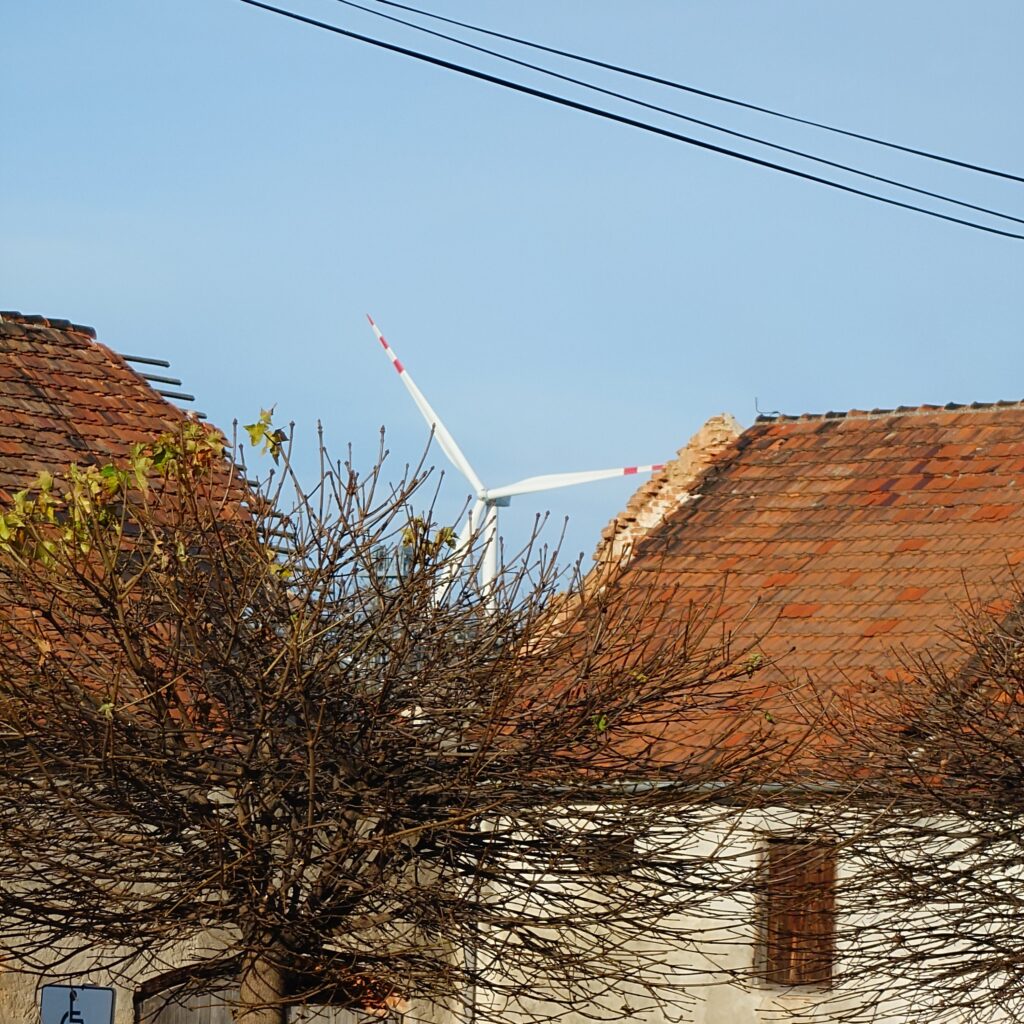14 January 2025
From doubts to joy. Wind energy has transformed our municipalities in Poland.
By Dawid Litwin, Elżbieta Jedlecka
The idea of building windmills in the Pomeranian municipality of Potęgowo first appeared nearly 25 years ago. Back then, rumors swirled that the presence of windmills would be disastrous for local agriculture—chickens would stop laying eggs, and cows would stop producing milk. Today, we can safely say that it was all fairytales. Since the first turbines were installed in 2008, Potęgowo has seen the construction of 56 turbines, with 23 more currently underway. The chickens still lay eggs, the cows still give milk, and nothing catastrophic has occurred. On the contrary, the benefits have been nothing short of remarkable.
Our municipality is home to a mere 6,500 people, yet income to the budget from wind energy is PLN 4.6 million (EUR 1 million) a year. We treat this revenue as our own contribution to national and EU projects, using it to secure investments worth PLN 20 million (EUR 4.7 million) and beyond.
Without this source of revenue, our municipality would have stagnated years ago, unable to progress forward. We would have been limited to covering basic operating costs, with no room for development. Instead, the income from renewable energy sources has enabled us to continue making the investments that our residents have long been waiting for.

For the benefit of all
But it’s not all about profit, the turbines bring additional benefits to the entire local community.
Landowners hosting the turbines earn significantly more from leasing their land than they would from farming alone. Local businesses have also flourished, from accommodation facilities to catering and other service providers, while residents gain employment with wind energy companies.
On top of this, the wind industry actively contributes to local community life. The wind companies don’t just sponsor cultural and sports events—they also fund significant infrastructure projects. One standout example is the construction of several kilometers of roads, entirely funded by wind companies, saving Potęgowo’s municipal budget millions of zlotys.
Successful winds blow in Poland
‘Benefits’ and ‘profits’ have become common terms for many local governments that chose to bet on wind energy years ago. Undeniably, the biggest driver of municipal development tied to wind infrastructure is the steady flow of budget revenues from various fees and taxes. Potęgowo is just one of many examples demonstrating the transformative power of this investment.
In the Wądroż Wielki municipality, home to 4,000 residents, annual revenues from seven wind turbines surpass one million zlotys—an average of PLN 140,000 (EUR 33,000) per turbine. With total revenue surpassing PLN 20 million (EUR 4.7 million), this is a significant contribution. These funds have played a key role in driving the municipality’s economic growth. Thanks to wind energy, the municipality has been able to achieve the goals outlined in its development strategy.
From a nationwide perspective, wind energy stands out as the more affordable option for energy. Electricity generated from coal is at least three times more expensive than wind power. Installing just one gigawatt of wind energy capacity could lower residents’ energy bills by PLN 20 (EUR 4.7). This isn’t just about cleaner energy; it’s about tangible savings for households across Poland.
Waiting for new regulations
It’s clear that onshore wind power is a game-changer for Poland, but its development is currently blocked at the legislative level.
Onshore wind power is hamstrung by distance regulations, which in many cases prevents the construction of turbines within 700 meters of residential buildings. These restrictions have blocked 84% of planned wind projects across Poland. The government’s proposed amendment to reduce the minimum distance to 500 meters remains unfulfilled, despite being a key promise of the administration.
This amendment would unlock significant benefits for both the energy sector and the broader economy. It is projected to increase Poland’s onshore wind potential by 2.5 times, from over 12 GW to more than 31 GW. This boost could contribute an additional PLN 70-133 billion (EUR 16-31 billions) to GDP by 2030, generate PLN 490-935 million (EUR 115-220 million) in local government revenues, and create approximately 100,000 new jobs.
The amendment to the regulations is eagerly awaited by municipalities like ours, which have already seen the positive impact of wind power. Take Potęgowo, for example—our town exemplifies how wind turbines can drive the development of infrastructure, propelling it into the 21st century. Similarly, Wądroże Wielkie offers vast potential for expanding wind energy, with ample space for more turbines.
Harnessing wind energy is simply in our best interest.
